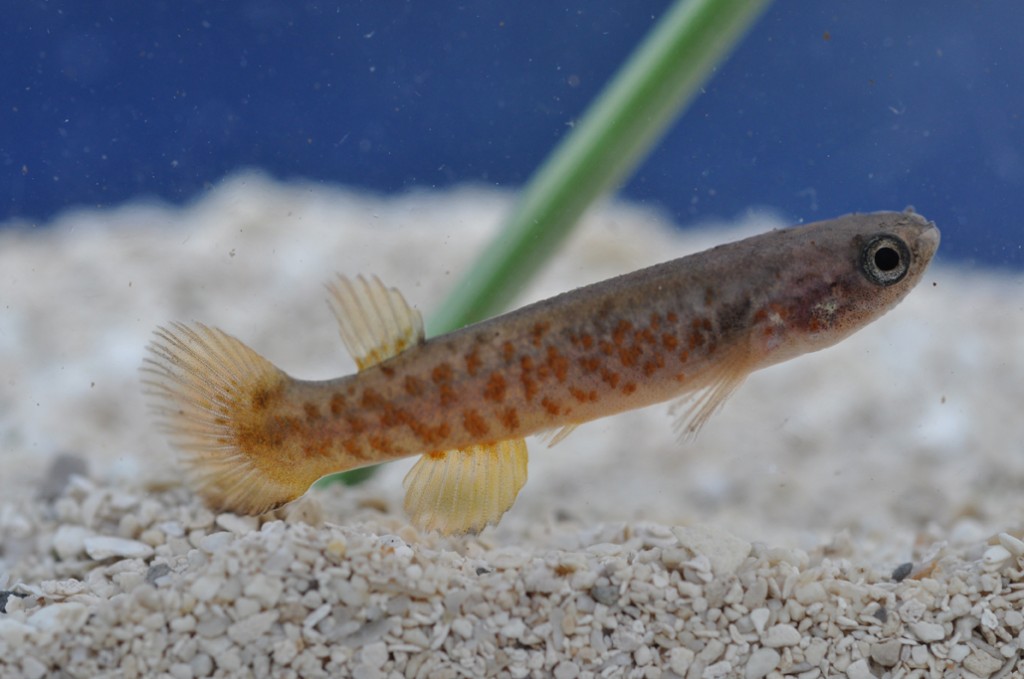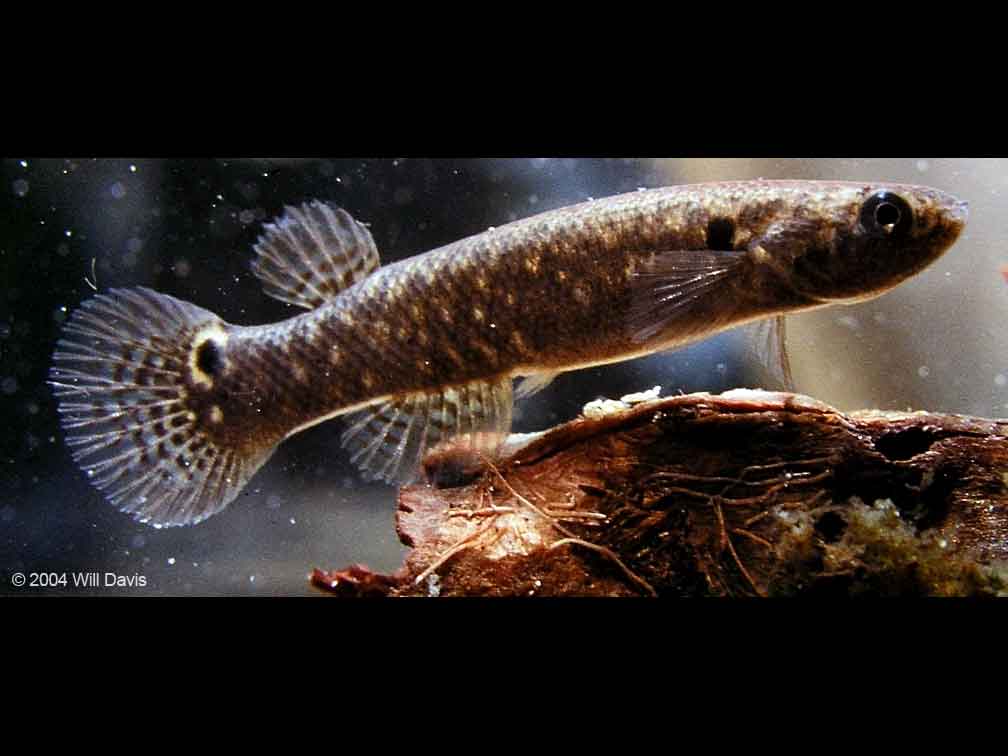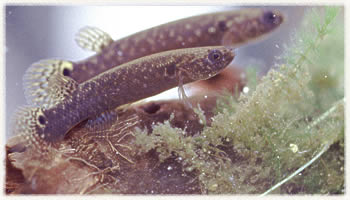
Rivulus marmoratus
FAMILY
Rivulidae
TAXONOMY
Rivulus marmoratus Poey, 1880, “from Cuba, if they do not exist
in the United States.” Poey’s description of the type locality
has to be one of the strangest in the history of
TAXONOMY
. As it
turns out, this species is found in Florida and Cuba; the types
are presumed to be from Cuba, Poey’s homeland.
OTHER COMMON NAMES
English: Rivulus.
PHYSICAL CHARACTERISTICS
Grows to 3 in (75 mm) in length. Hermaphrodites. Cylindrical
in shape, with tapering of the head and caudal peduncle and a
high scale count. Dorsal and anal fins are set far back (typical
for all Rivulus species), with the dorsal fin origin set back farther
than the anal fin origin. A characteristic splotchy brown
pattern, with an irregular dark mark just behind the operculum
(humeral blotch) and a rivulus spot (ocellus) on the caudal peduncle.
Primary and secondary males have the same body
shape, an orange or pink overlay (more often orange) on the
body and fins, mottling, and a dark humeral blotch. The rivulus
spot sometimes is absent, unpaired fins at times are clear
and at times have dark edges. The proportion of primary males
in Belize is high (25%), whereas elsewhere the proportion is
very low for both primary and secondary males.
DISTRIBUTION
Florida, Mexico, Belize, Nicaragua, Guatemala, Honduras,
French Guiana, Venezuela, Brazil as far south as Santos, the
Bahamas, and numerous Caribbean locations.
HABITAT
A semiterrestrial species that inhabits coastal mangrove forests
in very shallow water or the wet areas of their muddy flats, out
of water under detritus and leaf litter, or under or inside rotting
logs. Frequently occurs in the burrows of land crabs.
Found in marine and brackish water or in hypersaline pools
but not in freshwater.
BEHAVIOR
Can be caught in traps set in crab holes but dies if the traps become
flooded, possibly indicating that respiration of atmospheric
air is a necessity. They also can be caught on a tiny hook
baited with a small piece of worm. Captive individuals jump out
of the water to snatch a termite or ant held above the water
surface. In nature they flip along the water surface one or more
times or leave the water altogether to elude danger. Extremely
aggressive toward each other in aquaria, yet small aggregations
have been caught in crab burrows and under rotting logs.
FEEDING ECOLOGY AND DIET
Feeds on small terrestrial and aquatic insects, mosquito larvae,
polychaete worms, mollusks, and gastropods. It leaves the water
to seize food items but returns to the water to eat them.
REPRODUCTIVE BIOLOGY
The only known self-fertilizing vertebrate. Although they are
highly efficient at self-fertilization, hermaphrodites release
some unfertilized eggs. There is evidence that outcrossing
takes place, which would seem to indicate that the hermaphrodites
can suppress self-fertilization so that males can fertilize
the unfertilized eggs released by the hermaphrodites.
CONSERVATION STATUS
Not listed by the IUCN. Regionally are listed as a species of
Special Concern in Florida.
SIGNIFICANCE TO HUMANS
Widely used in field and laboratory studies in genetics, toxicology,
ecology, and physiology.
Photo Gallery of - Mangrove rivulus





 Animalia Life
Animalia Life